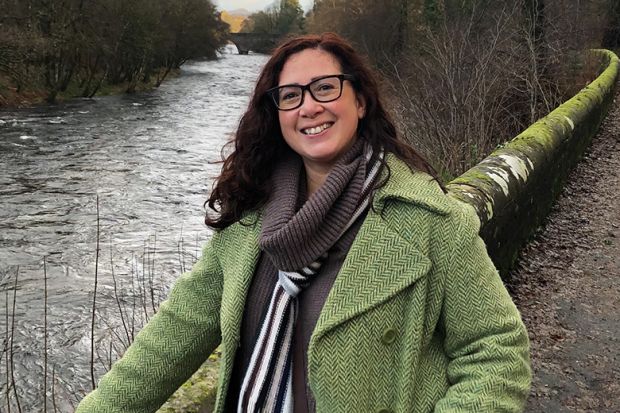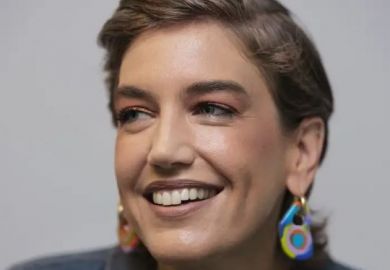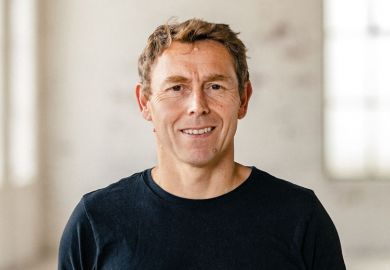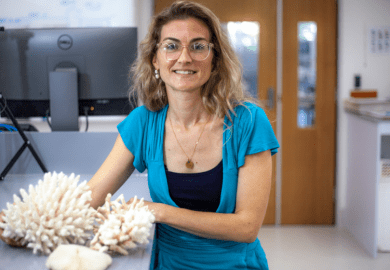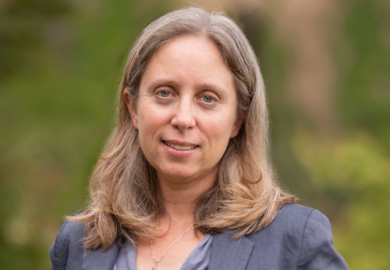Glaire Anderson is a senior lecturer in Islamic art at the University of Edinburgh’s Edinburgh College of Art. She attracted media coverage recently for her work with games company Ubisoft on building an immersive digital version of 9th-century Baghdad for the latest instalment of Assassin’s Creed, ranked at number 10 on the list of the best-selling video game franchises, with more than 200 million sales worldwide.
Where and when were you born?
Angeles City, the Philippines, in 1973.
How has this shaped who you are?
It’s made me sensitive to issues of representation – especially of women, but more generally those who have been minoritised, especially for their race, class or gender. My family moved to the US and we also lived in Italy for some years before settling in the American south. My life experiences as a BAME/Asian American Pacific Islander immigrant in the rural south in the US shape my commitments to anti-racist work and to my interest in exploring issues of identity, equity, diversity and inclusion, and decolonisation in my work. The Philippines has a complicated history of Spanish and Anglo-American colonialism. My father is white and was in the US military. I’m a by-product of those national and transnational histories, and someone who has been created and whose life has been shaped by legacies of empire and war. When I moved to the US, after living in the Philippines and then in Italy, as a child I was seen as being quite different in our small rural town. This wasn’t always negative, but I can certainly relate on a personal level to the notion of being othered. As a kid in school in the US I got used to being asked “are you oriental?” and “are you mixed?”
Tell us how you came to contribute to Assassin’s Creed Mirage and about the role your work plays in the game.
Many years ago my son introduced me to the game. He wanted to show it to me because I was working with a game engine in my own research into architectural history and he thought I would appreciate the game’s way of combining history and architecture. At the time I was researching the medieval aeronautics experiment that is the focus of my second book [A Bridge to the Sky: The Arts of Science in the Age of ‘Abbas Ibn Firnas], and I clearly remember how excited he was to show me the Assassin’s Creed Florence and how it included Leonardo da Vinci as a historical character, and his workshop and flying machine. Over the years, I saw how the Assassin’s Creed games kept his love for history alive, even when he wasn’t loving school. I was impressed at how those games inspired him to want to travel and see cities such as Florence and Rome, and artworks like Renaissance paintings, for himself. That has stayed with him into adulthood.
What sort of impact do you think your work has had via the game?
The most important impact my work on Assassin’s Creed has had is making visible a hugely significant historical time and place in global history, which might not have been familiar or visible to wide public audiences. I’ve been able to contribute to a representation of a medieval Islamic city as a beautiful place with a rich and significant artistic and intellectual history and legacy.
Your current research focuses on ‘diversifying gaming and digital cultural heritage’ – tell us more about what you’re working on here.
Building on my longer research trajectory on video game engines for visualising and teaching art and architecture, I've focused my research around experimenting with applying mixed reality to the work of art history. In 2020 I founded the Digital Lab for Islamic Visual Culture & Collections as a way to bring together my work with partners in games, GLAM [Galleries, Libraries, Archives and Museums], and education on video games and digital immersive technologies to make Islamic art more accessible to non-academic audiences.
Across the range of your work on medieval Islamic art and history, if people ask you to explain why your work matters, what do you say?
There’s a longstanding and unfortunate notion, in and out of the academy, that the history of art and architecture are not particularly serious topics and that they’re not “useful” to the world at large – that they’re something only an elite and privileged subset of society care about or have access to. I hope my work challenges this and that it could give people of all ages and from all walks of life access to information about a more diverse global past, one that they might not have known otherwise. I saw a practical problem in the world that I thought I could try to address using my academic background and skills: low visibility and problematic depictions of Middle Eastern and North African history in popular culture.
Do you think there are some misconceptions from universities or from historians themselves about what impact ought to, or can, look like in the discipline?
As an academic who has spent most of my career doing academic-facing work I resist the notion that we have to show that our research has “impact”. Research and creating new knowledge are too important to demand evidence of impact in the short term. We have to take a long view of research, and that means significance and impact might not always be immediately apprehensible, or quantifiable in the ways that funding councils and bureaucratic structures want. At this stage in my career, after almost 20 years of doing inward-facing research and teaching, I feel less satisfied with that way of working. Now I get more satisfaction from helping to move academic work out of the academy so that more people, of all ages, can enjoy it, benefit from it and learn from it. It’s more satisfying to me now to make work that I can share with my loved ones and my non-academic friends. I’m not sure I would have understood or described that as “impact” before, but that’s what it can and ought to look like from my perspective.
As a relative newcomer, how have you found life in Scotland?
I love living in Scotland – unexpectedly, I have felt completely at home since my very first visit. I’ve been very fortunate to have travelled to and lived in many beautiful places in my life, but for me Scotland takes the prize.
john.morgan@timeshighereducation.com
CV
1998 MA, architectural history and historical preservation, University of Virginia
2005 PhD, history, theory and criticism of architecture, Massachusetts Institute of Technology
2006-18 Associate professor of art history, University of North Carolina at Chapel Hill
2013 The Islamic Villa in Early Medieval Iberia: Architecture and Court Culture in Umayyad Córdoba
2018-present Senior lecturer in Islamic art, Edinburgh College of Art, University of Edinburgh
2023 A Bridge to the Sky: The Arts of Science in the Age of ‘Abbas Ibn Firnas
Appointments
Genevieve Bell will be the next vice-chancellor of the Australian National University and will succeed Brian Schmidt at the start of 2024. The cultural anthropologist, a former vice-president of Intel Corporation, has been at ANU since 2017, establishing its School of Cybernetics and its Autonomy, Agency and Assurance Institute. She has also served as interim dean of the College of Engineering, Computing and Cybernetics. Julie Bishop, ANU’s chancellor, described Professor Bell as “a compelling and passionate leader, with a deep understanding of the university’s distinctive mission, remarkable legacy, vibrant culture and tremendous assets”.
Archie Clements is joining Queen’s University Belfast as pro vice-chancellor for research and enterprise. Currently deputy vice-chancellor for research and innovation at the University of Plymouth, he replaces Emma Flynn, who is now provost at the University of Warwick. Professor Clements was previously pro vice-chancellor of the Faculty of Health Sciences at Curtin University and professor of infectious disease epidemiology at the Australian National University. Sir Ian Greer, the Queen’s vice-chancellor, hailed Professor Clements as “a world-renowned thought leader [who] brings with him a wealth of expertise and experience”.
Brian Falzon has been appointed dean of the School of Engineering, Design and Built Environment at Western Sydney University. He is currently at RMIT University, where he holds a chair in composite materials and aerospace structures and is the director of the university’s Space Industry Hub.
Jonathan Galloway will become the new vice provost and chief executive of Newcastle University in Singapore. He has been the head of Newcastle Law School since 2020.
Natalie Wilmot will be the new dean of Lincoln International Business School at the University of Lincoln, joining from the University of Bradford, where she is currently deputy dean of the School of Management.
Martin Van Kranendonk has been appointed head of the School of Earth and Planetary Sciences at Curtin University. He is currently director of the Australian Centre for Astrobiology at UNSW Sydney.
Register to continue
Why register?
- Registration is free and only takes a moment
- Once registered, you can read 3 articles a month
- Sign up for our newsletter
Subscribe
Or subscribe for unlimited access to:
- Unlimited access to news, views, insights & reviews
- Digital editions
- Digital access to THE’s university and college rankings analysis
Already registered or a current subscriber?
